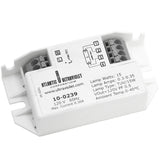Higher Efficiency UV Lamp Operation with Germicidal Ballasts
Posted by Nick on for ProLampSales

While ultraviolet and germicidal light bulbs are a subset of fluorescent lamps, they are often used in highly specialized lighting applications. So it should come as no surprise that these applications also require special ballasts to fit the requirements of the equipment and spaces that the bulbs are used in.
While we offer a full line of general fluorescent ballasts from name brands like GE, Philips Advance, and Morris, most of our germicidal ballasts come from Atlantic Ultraviolet under their Surelite™ brand name. These ballasts have been engineered to meet different requirements.
Germicidal ballasts are not used in regular fluorescent fixtures where a light going out, a ballast buzzing, or flickering is annoying but not a dealbreaker. Instead, they are used in very specialized equipment for air and water purification, and for deactivating harmful microbes by damaging their DNA.
With specialized equipment comes different requirements for the space allowed for lamps and ballasts. Many of our germicidal ballasts look a little different from regular electronic or magenetic fluorescent ballasts because they have been designed to fit into smaller spaces. This allows them to fit into tight spaces. Surelite™ ballasts also provide higher lamp output while using less energy, maintaining the reliable, long life of the ultraviolet bulb.
Germicidal ballasts are also designed with the germicidal equipment in mind. This makes for a wide range of sizes and features, including variable output, integrated LED indicator lights on the ballast itself, and lamp-out protection with a safety circuit.
At ProLampSales, we maintain a large and growing database of equipment that use germicidal bulbs, ballasts, and quartz sleeves. You can browse our products by the type of ultraviolet lamp you need, or find the exact replacement lamp and ballast based on the make and model of your equipment.
- Posted in Ballasts, Ultraviolet Light
Featured Products (View All)
0 Comments




